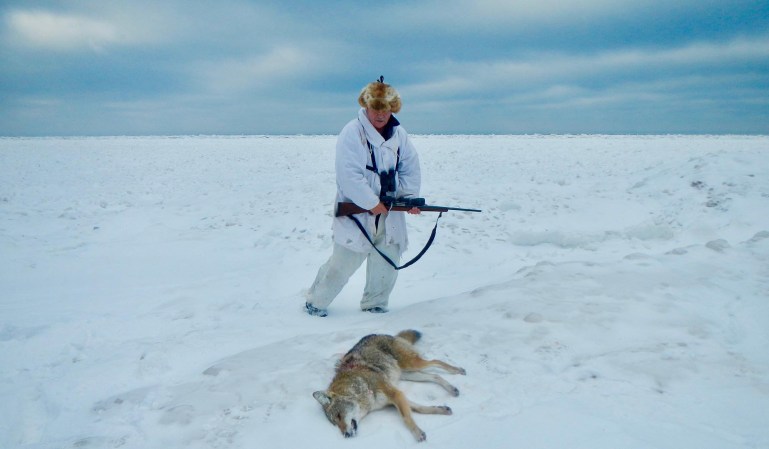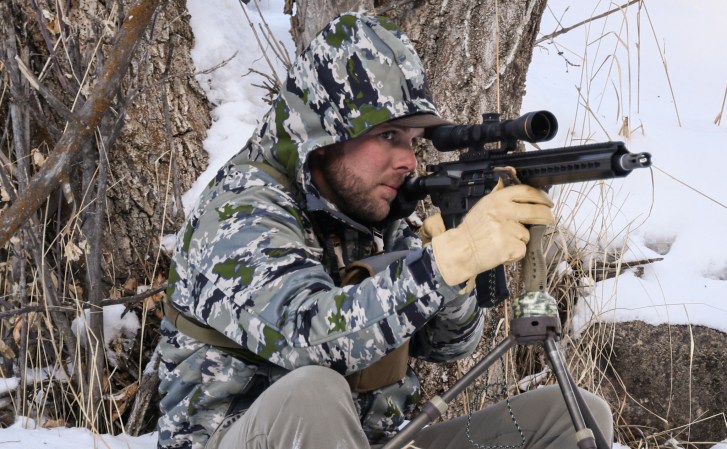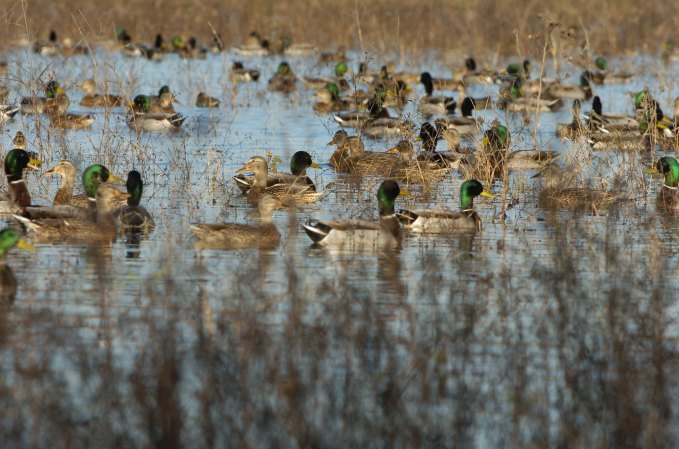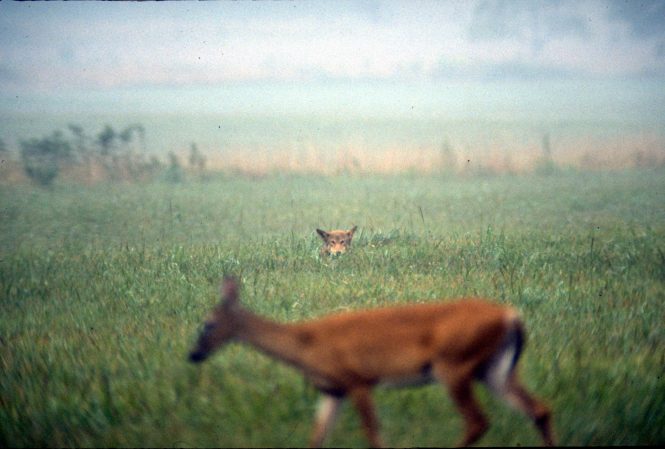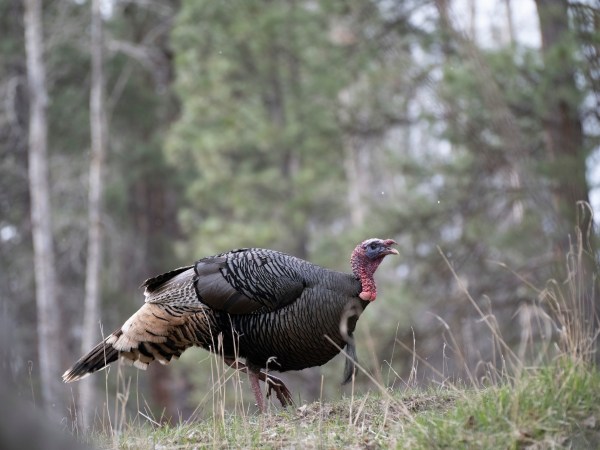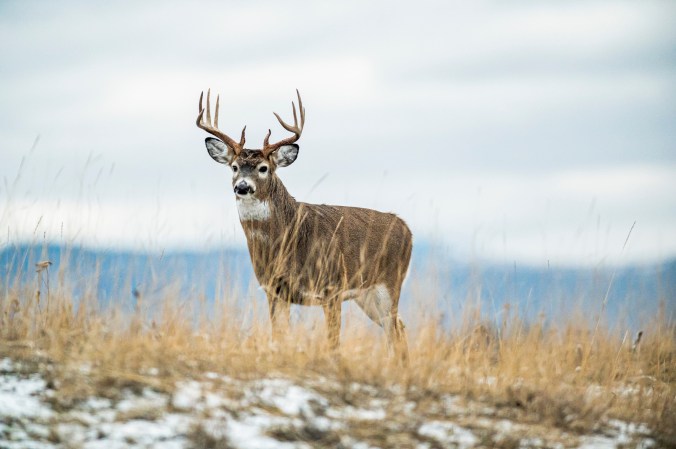The coyote of the winter months of February and March isn’t exactly the same animal it was just a few months earlier. Yes, it’s still smart, opportunistic, and stealthy. But the coyote experiences a number of drastic behavioral changes through the course of the winter, a reality well understood by the seasoned coyote stalker.
Around the first of the year, coyotes are getting themselves territorially established, says Dr. Julie Young, who heads the U.S. Department of Agriculture’s Predator Ecology and Behavior Project in Logan, Utah. At that time they are looking for a 7- to 10-square-mile territory where they can set up shop.
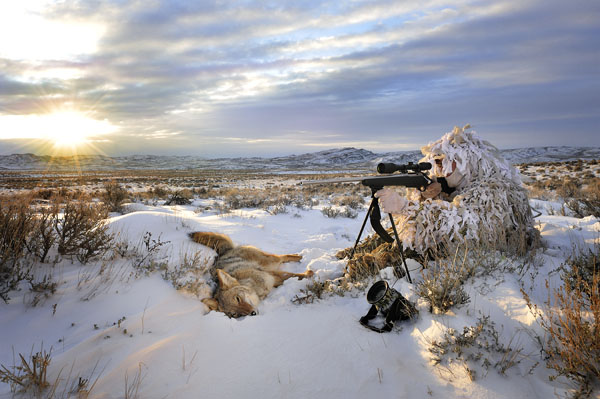
“By early to mid-January, the young of last year have pretty much dispersed,” says Young. These youngsters can roam for the next few weeks, often getting pushed around by established adults until they find their own niche in the landscape. But the larger reality driving coyotes and their behaviors in February and March is procreation.
Here’s how an in-depth look at that behavioral change and tips from the pros on how to capitalize on it.
The Need to Breed
By early February, with the mating fever on them hard, “Male coyotes patrol their territories and keep track of females,” says John Olson, a furbearer biologist for the Wisconsin Department of Natural Resources. “Because females go into estrus during late winter, both genders are super-active at that time in order to be certain of either being bred or doing the breeding.”

“Males can become very aggressive now,” Young notes. “Part of that aggression is to defend their territories from other males, part of it is to attract females.”
Once mates find each other, “They pair up very tightly, until well after the pups are born,” says Dr. Dan Harrison, a wildlife ecologist at the University of Maine. Actual mating will occur around the middle of February. Once that happens, activity increases. Even in relatively warm parts of the country, it’s cold enough now that coyotes need more calories than they did just a few months earlier. All the mating activity makes them even hungrier.
As winter goes on, carrion becomes a huge food source for coyotes. Studies in Wisconsin found that about half the food eaten by coyotes in the state’s southeastern counties during the deep winter months was carrion from livestock and poultry operations. In northwestern Wisconsin, similar research discovered that more than a third of the coyote’s winter diet was from deer carcasses. Landmark coyote research performed in the early 1980s at the University of Colorado by wildlife biologists Marc Bekoff and Michael Wells revealed that hunter-killed elk carrion provided the bulk of coyote forage during February and March in Grand Teton National Park in northwestern Wyoming.
“That time of year, there are a lot of carcasses around, and they provide low-risk food sources for coyotes, along with the small rodents they eat year-round,” Young says.
Carrion, if available, requires considerably less time and energy on the part of a hungry coyote, though that same coyote will turn up its nose at the easy meal during the summer.

In those areas with a good deal of snow and cold, the coyotes also seem intent on conserving their energy. That may explain why Bekoff and Wells documented coyotes resting more than half the time during winter months versus being at rest a third of the time or less in fall and summer. They also found that coyotes hunted only 14 percent of the time in winter, compared to 43 percent of the time in fall and 44 percent in spring and summer.
Not that coyotes stop hunting for food in the winter. A 1995 study documented packs of coyotes hunting and killing deer and elk in the winter at Yellowstone National Park. The deeper the snow, researchers found, the more successful the coyotes were, presumably because the deer and elk were hindered by the heavy white stuff, but also possibly because the ungulates were malnourished.
In northern states, says Harrison, coyotes hunt hares, rabbits, and rodents during early winter. “But when you get really deep, fluffy snow, coyotes move into conifer stands, where the snow isn’t as deep,” he says. “That’s also where deer are wintering, so deer become a much likelier prey item now.”
As the snow deepens, coyotes frequent routes that require less energy to travel: deer or elk trails, roadways and river bottoms, lake ice, and even snowmobile trails. During snowstorms and periods of intense cold, they seek out burrows.

Whether it’s warm or cold, March sees a flurry of coyote activity across North America. Male and female pairs establish and mark their territories and can be seen running together as late as midday. Males fight off interlopers in defense of breeding areas.
Howling is a common behavior now, and a boisterous pair can sound like a dozen coyotes to the uninitiated. Females search out likely dens, excavating new ones or enlarging those of smaller animals. Females are also eating more, preparing their bodies for pregnancy.
Put all of this behavioral information, and the expert advice on these pages, to work for you and you’ll put more coyotes on the ground this winter.
Read Next: Coyote Hunting Gear You Need to Get Started
Tips From The Pros
Coyote Pro: The Heartland Assassin
Steven Reinhold, 40, Ashland County, Ohio

Reinhold hunts for coyotes in rolling farmlands interspersed by smaller woodlots and river bottoms. “The weather’s tough here in February,” he says. “Lots of swirling wind and snow. Your setups have to be different than they were in fall.”
In the fall, younger coyotes came sprinting to a distressed rabbit call–no decoy required. But winter coyotes are more wary. They need extra enticing.
“I put a flapping-wing motion decoy in a field, so they can see it flapping over the top of the vegetation, and match it up with a blackbird or woodpecker distress call,” says Reinhold. “Coyotes will come running, ready to attack.”
As the snow gets deeper, coyotes are looking for an easy meal, so any time a local farmer has to euthanize a downer cow, Reinhold marks the spot. Coyotes will usually show up there at some point.
“In March, I find pup yips and pup distress calls work well. They come in so fast, it’s up close and personal with the coyotes I hunt,” says Reinhold. “Forty- to 50-yard shots–and some are a lot closer!”
As far as winter calling goes, Reinhold says, “I tell people, don’t start off loud. You never know where they are, and they can be real close. Start softly with a locator call, then change it up with yips. If those don’t work, then I go to a prey distress call. I’ll give it 20 to 25 minutes, then it’s t ime to move.”
Read Next: Best Coyote Calls
Reinhold’s Coyote Rig
Remington 870 Super Magnum 12-gauge with a thumbhole stock, topped with a
Nikon ProStaff 3-9×40 scope. A Carlson Dead Coyote choke paired with 3½-inch HEVI-Shot Dead Coyote loads.
Coyote Pro: The High-Desert Drifter
Cory Lundberg, 38, Highland, Utah

“They’ve been called all fall with prey calls,” says Lundberg of the coyotes he hunts in the rugged wilds of Utah. “So I focus on challenge calls and intermittent howls. That works because, with mating season starting in early February, the males can be very aggressive. They hear a challenger in their territory and a lot of times they’ll come in bristling, ready for a fight.”
This time of year, Lundberg also finds that a fox-in-distress call can really pull in the coyotes. He uses extreme winter weather to his hunting advantage, too.
“We’ll get some really big snows out here, three to four days’ worth, where coyotes are forced to hole up. Once it’s over, the coyotes come out and they’re pretty much starving. Basically, any call you blow will have a good chance of pulling them in.”
Even with the increased activity as the mating season goes on, Lundberg finds that winter coyotes require some long-distance shots, so he makes sure he packs his shooting sticks.
“By the time you get into March, they’ve been hunted, often pretty hard, and they’re wary,” Lundberg says. “They’ll stop out at 400 or 500 yards and look things over before they’ll come in. And if they don’t like something, then they’re not coming, so that’s where your only shot’s going to be.”
With the wide-open spaces he hunts, Lundberg finds good camo can make or break a hunt. His favorite is King’s Camouflage. “Their Snow Shadow camo’s the most effective I’ve ever used. If you keep still, the coyotes have no clue you’re there.” If there is no snow, Utah’s landscape is a patchwork of grays and browns, so he breaks out King’s Desert Shadow pattern.
Lundberg’s Coyote Rig
Savage Predator bolt-action in .22/250 Remington, paired with a Trijicon 5-20×50 AccuPoint. Federal Premium load with a 55-grain ballistic tip bullet.
Coyote Pro: The Northwoods Cruiser
Rick Theriault, 47, Millinocket, Maine
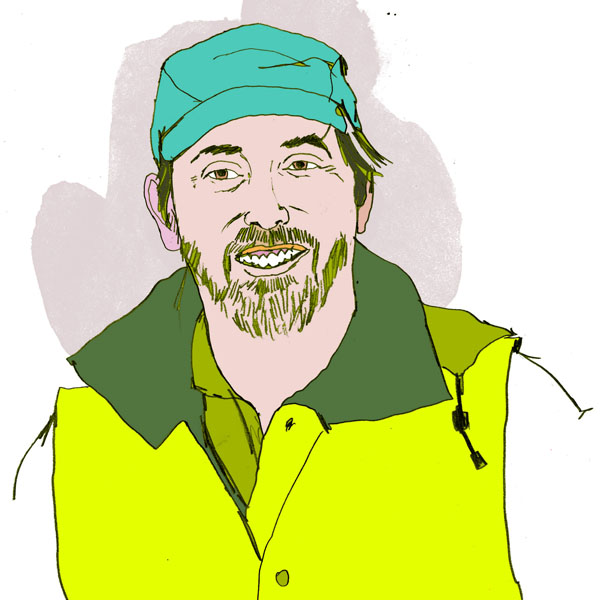
By February, in the big woods of north-central Maine, Theriault finds that coyotes are extremely guarded and ultra-cautious. Deer hunters started it off a few months earlier, killing a number of coyotes. Trappers have taken their share, too, and predator hunters have already called in many of the younger, less experienced animals.
“They’ve heard that dying rabbit call over and over,” says Theriault. “That’s not going to work so much now. Coyote vocalizations are a better sound choice. They’ll spark a territorial response. You strike up a conversation with one, and you’ve got a pretty good chance of pulling him in for a shot.”
Theriault’s shots aren’t easy, though, as the cover where he hunts is thick and the terrain very hilly. Just seeing beyond 50 yards can be a challenge. Because of that, Theriault often sets up on a stretch of frozen river where he can spot a coyote approaching from a hundred yards or better.
As mating behavior intensifies, and the hard winter stretches on, Theriault finds that very hungry coyotes are looking for a big, easy meal–the kind carrion provides. Even now, though, with highs in the single digits and a couple of feet of snow on the ground, the coyotes are surprisingly picky.
“They really like moose and beaver, but for some reason they don’t care for dead deer.” Road-killed moose is Theriault’s ideal coyote bait.
In March, when the temperatures are a little warmer, the coyotes start moving around more. “They’re a lot more active at night then, for sure,” he says. A favorite setup is to place moose carrion out on a frozen lake, sit inshore inside an icy shanty, sound off with a variety of coyote calls, and wait for a shot. “I use a Wildlife Technologies MA-15 electric call. Its sound quality and volume are unsurpassed by any other electronic caller.
“With the snow on the ground, all you need is a little moonlight and they show right up,” Theriault says. “The lighted reticle helps, too.”
Theriault’s Coyote Rig
Les Baer AR .223 M4 Flattop LE Model with a 16-inch barrel, topped with a Leupold Mark IV 3.5-10×40 with an illuminated reticle.
Coyote Pro: The Southern Gentleman
Emory Josey, 77, Macon, Georgia

By early February, the Georgia coyotes Josey hunts are well into breeding season, and are usually running together. “That’s your best chance for a double. The male is the more daring of the two and usually the leader.”
He finds that male coyotes without mates are often agitated and relatively careless. “They’re like buck deer at that time: They’re more interested in finding a mate than even eating.”
A coyote whimper call, he finds, is very good at pulling in single males.
“It’s a short-range call of a female in estrus and ready to breed. A female invitation howl works well, too.”
In March, coyotes begin to settle down, and Josey finds them more willing to respond to the normal prey distress calls. Frequently, he says, the vocalizations bring in the coyotes, while distress calls seal the deal.
Josey’s favorite attractant is Dazed Dog Coyote Mist, by Porath Game Calls. “It’s got different urines in it–rabbit, deer, and raccoon, I think. The coyote’s nose is the best in the business, but this scent bombards it with several smells at once. He’s confused and wants to figure it out, and a coyote will lose some of his caution coming in to see what it is he’s smelling.”
Josey’s Coyote Rig
Savage Model 11 in .204 Ruger, topped with a Nikon ProStaff 3-9×40. He shoots a Federal Premium VitalShok round loaded with a 39-grain Sierra BlitzKing bullet. “That BlitzKing makes a little hole, goes in and blows up inside, and you don’t even have any blood,” Josey says.
Coyote Pro: The West Texas Plainsman
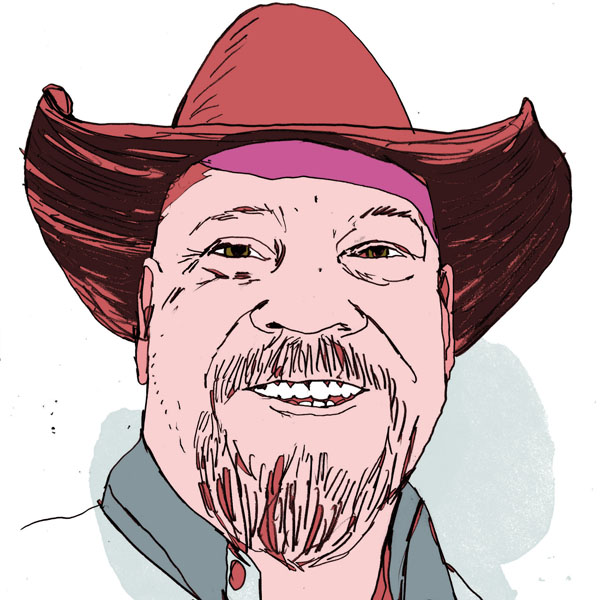
Watson relies heavily on challenge calls in February–they tend to get the local male coyote population very riled up.
“I’ve seen them come in to challenge calls with their hackles up and their teeth showing,” Watson says. “A male gets really pissed that another male’s in his territory, and he’s going to do something about it.”
A couple of weeks later, coyotes start pairing up and breeding. That gives Watson a good chance at doubles right through March.
“If two coyotes are coming in, try to kill the smaller female first,” Watson says. “But keep calling, with a noise like an injured coyote. A lot of times, the male will hang around–he doesn’t want to leave the female.”
Watson finds that cold snaps push coyotes in search of more food, especially at night. In fact, Watson does most of his hunting at night, using a red spotlight to locate the incoming coyotes.
“When I shine that light in their eyes, they can’t see anything behind it,” Watson explains. “The red light doesn’t seem to scare them off, either. They just keep coming.”
Read Next: How to Hunt Coyotes
Watson’s Coyote Rig
Remington 700 with custom bull-barrel, in .223 and with a Timney trigger set at 1.5 pounds, topped with a Leupold 1.5-14×50. His own handloaded 55-grain ballistic tip bullets pushed along at 3,100 fps.


